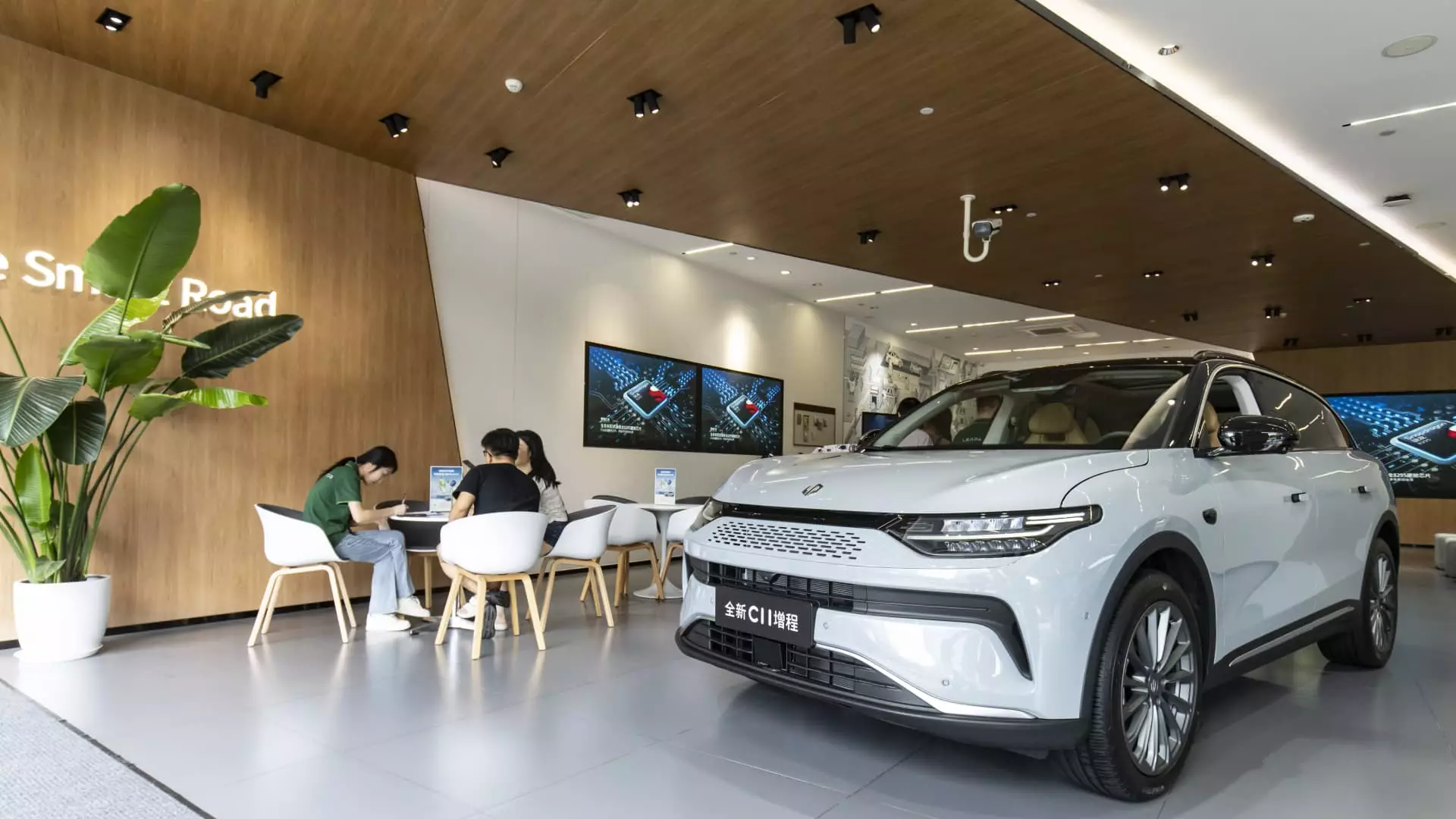In recent years, the automotive market in China has seen significant shifts in consumer preferences, particularly towards hybrid vehicles. This trend has emerged even as traditional gasoline-powered cars fall out of favor. In 2024, the Chinese automotive giant BYD reported that approximately 2.5 million out of its 4.3 million passenger cars sold were hybrid-powered, marking a notable shift from the previous year when battery-only vehicles were more prevalent. This trend illustrates a growing desire among consumers for a more versatile vehicle that offers the benefits of both electric and internal combustion engine technologies.
Despite the solid performance of battery-only electric vehicles (EVs), hybrids are beginning to overshadow them in terms of sales within China. Tesla, the renowned maker of exclusively electric cars, is expected to surpass 600,000 units sold for the second consecutive year. While this indicates healthy growth, it also points toward a potential plateau in the fully electric segment as consumers increasingly gravitate towards hybrid models. Joe McCabe, president of AutoForecast Solutions, noted that internal combustion engine vehicles—including hybrids—will continue to maintain a presence in the market, hinting at a diverse automotive ecosystem moving forward.
In the bustling automotive market, BYD stands out as the dominant player, significantly outpacing competitors like Tesla and Li Auto. With impressive numbers, Li Auto reported record deliveries of over 500,000 vehicles, with most of its lineup equipped with a unique fuel tank to extend electric driving range. Meanwhile, Stellantis’ partner Leapmotor is also making waves with a hybrid battery and gasoline vehicle offering, achieving nearly 300,000 car sales in 2024. These developments suggest that the competition is intensifying, with companies not only trying to sell electric vehicles but also hooking consumers with hybrid offerings that alleviate range anxiety.
The competition is further fueled by innovative electric car startups. For example, Zeekr and Nio, both of which previously focused solely on battery-powered vehicles, are now stepping into the hybrid space. With plans to launch their hybrid models in the coming years, these companies are recognizing the opportunity to capture a share of the growing hybrid market. Additionally, Xiaomi’s recent entry into the electric vehicle market with its SU7 sedan shows that even tech companies are eager to join the fray. With ambitious delivery targets, Xiaomi aims to deliver 300,000 cars by 2025, a figure that, if achieved, could significantly impact established players in the industry.
A critical factor contributing to this surge in hybrid and electric vehicle sales is the supportive governmental policies that have emerged to encourage local automotive production. Chinese cities are making it easier to obtain license plates for new energy vehicles, further incentivizing consumers to opt for hybrids and EVs over traditional gasoline-powered vehicles. Additionally, recent subsidies to stimulate the market indicate a strategic effort by the Chinese government to bolster domestic automakers while reducing reliance on foreign brands. This policy landscape suggests that the shift toward new energy vehicles is more than a simple market trend; it is part of a broader initiative to transform China into a leader in the global automotive arena.
As China continues to navigate the complexities of its automotive landscape, the rise of hybrid vehicles represents both a challenge and an opportunity. With prominent companies like BYD leading the charge and new entrants invigorating the market, the hybrid segment is poised for significant growth. The implications for fully electric vehicles remain uncertain, as the industry appears to be moving toward a hybrid-dominated future, driven by consumer demand for flexibility and efficiency. This shift also underscores the importance of supportive governmental policies and market strategies that prioritize innovation and sustainability in the quest for cleaner transportation. As we look ahead, the role of hybrids in China’s automotive landscape is clearer than ever: they are not just a bridge to a fully electric future, but a vital component of a diverse and evolving market.


Leave a Reply